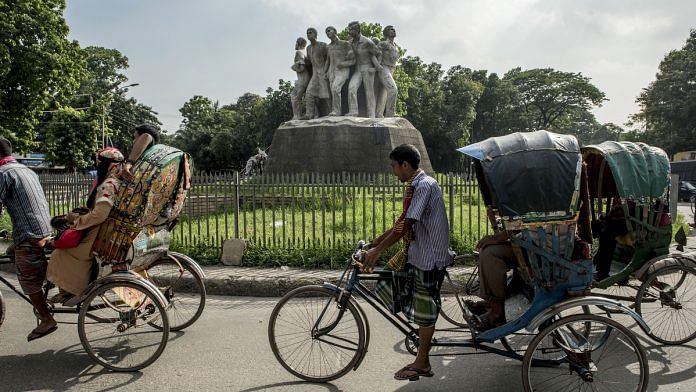Analysis of the connections developed by the two most prominent new strains of Islamist terror—ISIS and Al-Qaeda—is vital.
ISIS followers and their support base from rump-JMB [Jamaat-ul-Mujahideen Bangladesh] went for the more spectacular, headline-grabbing style of attack. Their connections were more international than regional, as they came from or had travelled to Europe, Canada, Australia, Japan, Malaysia and Syria. They chose their victims randomly, rather than targeting specific individuals for perceived crimes, and pursued a millenarian or fate-driven style of attack. There have seldom been times when Bangladesh has received as much media attention as the twenty-four hours following the attack on the Holey restaurant. In this sense, the attack was a success. It was successful as well in that it was choreographed with a view to creating a spectacle for the news media. It was one of the first attacks that ISIS claimed responsibility for while it was still under way. Furthermore, the terrorists disseminated shocking images from inside the restaurant while the attack was in process. This caused uproar, condemnation and a massive government crackdown.
Al-Qaeda, on the other hand, took a very different approach. The Al-Qaeda in the Indian Subcontinent (AQIS) subdivision, which emerged in 2014, was seen by many as a response to the growing global prominence of ISIS. In many ways, in Bangladesh, AQIS has been a roaring success. The group has never achieved 24-hour television coverage, but its successes have lasted. Like in the parable of the tortoise and the hare, AQIS has slowly but surely outpaced ISIS, by being in tune and reactive to domestic conservative sentiment and youth anger.
Also read: India was of little value to ISIS. That’s all set to change now
AQIS has a stronger local or regional vision. As a predominantly Pakistan-based entity, it puts regional imperatives front and centre. Its attacks are deliberate and targeted. While the choice of targets undoubtedly reflects the whims of well-heeled members within the network, the victims have also been eminently polarising figures. They tapped into widely held beliefs that had been laid down through decades of Cold War-inspired governance, pedagogy and resurgent Arab-inspired religious orthodoxy. Atheists and secular liberal bloggers challenged the self-styled personification of piety adopted by the Jamaat war criminals. By targeting these political dissidents, the attackers acted in concert—philosophically, politically and emotionally—with those on a broad sweep of Bangladesh’s political right.
The right had a major national newspaper to produce propaganda for them in the form of Amar Desh, which was to the BNP what Breitbart was for US President Trump around the time of his 2016 electoral victory. AQIS worked alongside, if not always in full agreement with, vast networks of madrassas belonging to the Hefazat movement, which both of the country’s main political parties tried to co-opt or use. AQIS’s targeting of LGBTQ+ activists played into a conservative ideology, as did the accusations levelled at these victims of being foreign agents. Crucially, these attacks forced government ministers to kowtow to the killers, both in terms of policy and public statements. AQIS’s statements did not just tap into public angst over issues relating to lifestyle or ‘deviant’ Muslims. By 2018, the group had issued public statements on the Rohingya refugees and the August student protests, which erupted after two students were killed on the road by reckless drivers. All of these themes, from the far-fetched linkages of homosexuality to America, to the more grounded complaints about the brutal treatment of the Rohingya, feed a sense of Muslim persecution and the need for order in a chaotic, immoral world.
Also read: Islamism spreading like virus in secular Bangladesh, pushing youth to hate, kill non-Muslims
It would be wrong to try to make sense of terror in Bangladesh only through comparison and analogy. But it would be even more erroneous to suggest that Bangladesh’s experiences are aberrations and not linked to or symptomatic of more widely held psychological phenomena. Modern Bangladesh in many ways provides textbook breeding grounds for ‘ressentiment’. It is a young political entity, now only four and a half decades old, and many of the terms of its constitution are not upheld. Promises of equality and justice go unmet, while corruption and inequality flourish.
 This excerpt from Many Rivers, One Sea: Bangladesh and the Challenge of Islamic Militancy by Joseph Allchin has been published with permission from Penguin Random House India.
This excerpt from Many Rivers, One Sea: Bangladesh and the Challenge of Islamic Militancy by Joseph Allchin has been published with permission from Penguin Random House India.



